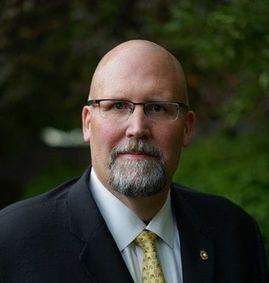SUBMIT A COLD CASE
Are you a member of law enforcement? Are you a victim, or the family member of a victim? You can submit your case to the cold case foundation by clicking the the link below and filling out the cold case application. We never charge law enforcement, victims, or victim's family for our work. We are here to serve you!
Support the Cold Case Foundation
Forensic Fundraiser!
Get your Autographed Copy of "Predators" when you donate $100.Signed by Greg Cooper - All donations go to the Cold Case Foundation Forensic Fundraiser. We are raising $10,000 to pay for forensic testing for a number of cold case homicides we are assisting on.
"Predators: Who They Are and How to Stop Them" explores serial offenders, their crimes and how they think. What makes these individuals more dangerous than their instinctive wildlife counterparts, however, is that they consciously choose to inflict their will on the more vulnerable members of their own species. To protect our loved ones and ourselves requires that we truly educate ourselves about the predators who live in our society and then take appropriate action. This excellent, in-depth study will help readers lead safer lives. For a limited time you can get this updated, autographed copy when you donate $100, and support Forensic Testing on real cases! |
|
|
ABOUT COLD CASE FOUNDATIONWe are dedicated to stopping the deadly compounding effect of cold cases and providing hope and resources to families affected by violent crime. The Cold Case Foundation is devoted to raising public awareness and creating partnerships to assist and provide law enforcement whatever resources are needed to bring about closure.
|
WELCOME TO COLD CASE FOUNDATION |
|
A disturbing study of FBI records found that since 1995 the national average of solved homicides in the United States is only about 64%— leaving 36% of murders unsolved annually. This mound of unsolved Cold Case murders has a compounding financial and workload effect on police departments and the respective personnel assigned to work them.
And the primary key to solving them is the conditional factor that they must be WORKED. It is not for lack of interest that cases turn cold and are sometimes seemingly forgotten; they are never forgotten by the victims, their families, or by the investigators who have worked them. We must ensure that a Cold Case is never at the mercy of insufficient funding or otherwise available resources. Law Enforcement’s need to resolve Cold Cases is ever present, but the resources and budget to solve these violent crimes are not. |
Our Team
Greg Cooper
|
Dean Jackson
|
COLD CASETHe Confession KillerDeborah Sue Williamson was 18 years old when she was brutally murdered in her own driveway. Her case was initially attributed to Henry Lee Lucas, though the was later proven to be a false confession. We were brought into Debbie's case and in conjunction with her family, we agreed to participate in this fantastic docuseries from Netflix. This series looks at Henry Lee Lucas and the massive number of false confessions gave and the lasting impact those "confessions" have had on cold case homicides.
|
|
AN estimated--
5,737 Cold-blooded killers Get Away With Murder…
Every Year
A disturbing study of FBI records found that since 1995 the national average of solved homicides in the United States is only about 64%— leaving 36% of murders unsolved annually. This mound of unsolved Cold Case murders has a compounding financial and workload effect on police departments and the respective personnel assigned to work them.
In order to address this challenge, some police departments are able to dedicate Cold Case detectives, while others simply must do the best they can with limited overtime and scarce funding. Unfortunately, the problem only compounds over time, while departments also have to address new violent crimes occurring daily.
For example, in 2013 alone, more than 1,163,146 violent crimes were reported nationally, including 14,196 homicides, 79,770 rapes, and 724,149 assaults. The Los Angeles Police Department had more than 11,000 unsolved murders committed between 1960 and 2003.
Generally, if sufficient evidence is gathered within 24-48 hours of the crime, then the probability of solution and conviction rates increase. This is especially true of homicides and rapes. While investigators are just trying to keep up with their normal workload involving less serious offenses, their time and departmental resources are understandably realigned once a murder or rape is reported.
The work continues to mount and if another rape or murder occurs then eventually department and even city-wide resources have to be re-allocated and re-prioritized according to the highest degree of solvability. Imagine the level of frustration and emotional turmoil caused by this revolving cycle. Add to this the related financial burdens and conflicts that communities are faced with in response to such crimes and their aftermath. Moreover, if the offender isn’t identified and apprehended then they are at liberty to continue to victimize society and the consequences are often immeasurable.
We know that Cold Cases are solvable.
And the primary key to solving them is the conditional factor that they must be WORKED. It is not for lack of interest that cases turn cold and are sometimes seemingly forgotten; they are never forgotten by the victims, their families, or by the investigators who have worked them. We must ensure that a Cold Case is never at the mercy of insufficient funding or otherwise available resources. Law Enforcement’s need to resolve Cold Cases is ever present, but the resources and budget to solve these violent crimes are not.
We are dedicated to stopping the deadly compounding effect of cold cases and providing hope and resources to families affected by violent crime. The Cold Case Foundation is devoted to raising public awareness and creating partnerships to assist and provide law enforcement whatever resources are needed to bring about closure.
[SOURCES: FBI Uniform Crime Reporting from 1995 - 2013 and LAPD data]
In order to address this challenge, some police departments are able to dedicate Cold Case detectives, while others simply must do the best they can with limited overtime and scarce funding. Unfortunately, the problem only compounds over time, while departments also have to address new violent crimes occurring daily.
For example, in 2013 alone, more than 1,163,146 violent crimes were reported nationally, including 14,196 homicides, 79,770 rapes, and 724,149 assaults. The Los Angeles Police Department had more than 11,000 unsolved murders committed between 1960 and 2003.
Generally, if sufficient evidence is gathered within 24-48 hours of the crime, then the probability of solution and conviction rates increase. This is especially true of homicides and rapes. While investigators are just trying to keep up with their normal workload involving less serious offenses, their time and departmental resources are understandably realigned once a murder or rape is reported.
The work continues to mount and if another rape or murder occurs then eventually department and even city-wide resources have to be re-allocated and re-prioritized according to the highest degree of solvability. Imagine the level of frustration and emotional turmoil caused by this revolving cycle. Add to this the related financial burdens and conflicts that communities are faced with in response to such crimes and their aftermath. Moreover, if the offender isn’t identified and apprehended then they are at liberty to continue to victimize society and the consequences are often immeasurable.
We know that Cold Cases are solvable.
And the primary key to solving them is the conditional factor that they must be WORKED. It is not for lack of interest that cases turn cold and are sometimes seemingly forgotten; they are never forgotten by the victims, their families, or by the investigators who have worked them. We must ensure that a Cold Case is never at the mercy of insufficient funding or otherwise available resources. Law Enforcement’s need to resolve Cold Cases is ever present, but the resources and budget to solve these violent crimes are not.
We are dedicated to stopping the deadly compounding effect of cold cases and providing hope and resources to families affected by violent crime. The Cold Case Foundation is devoted to raising public awareness and creating partnerships to assist and provide law enforcement whatever resources are needed to bring about closure.
[SOURCES: FBI Uniform Crime Reporting from 1995 - 2013 and LAPD data]
Is there really a problem?
Look at the disturbing numbers.
Look at the disturbing numbers.
Our objective is to support law enforcement agencies in their efforts to successfully close the following types of cold case:
• Homicides
• Missing Persons
• Unidentified Bodies
• Rape/Sexual Assaults (with serial characteristic)
...through Funding, Consulting, Training, Networking and Victim Support.
• Homicides
• Missing Persons
• Unidentified Bodies
• Rape/Sexual Assaults (with serial characteristic)
...through Funding, Consulting, Training, Networking and Victim Support.
Join Us
We're always looking to expand our network of Law Enforcement professionals, Investigators, and Forensic Experts. Volunteer to join our network as we continue our efforts to assist Law Enforcment in clearing Cold Cases.
Support us
Don't be dismayed if you're not a member of Law Enforcement or A Forensic Expert. Join us on social media and keep an eye out for other opportunities to volunteer! The Cold Case Foundation is empowered and able to provide a legacy of support to Law Enforcement, Victims and their friends and families through the contributions of individuals, corporations and other foundations. We are grateful to all our financial partners and would like to extend an invitation for you to become a financial partner today!







